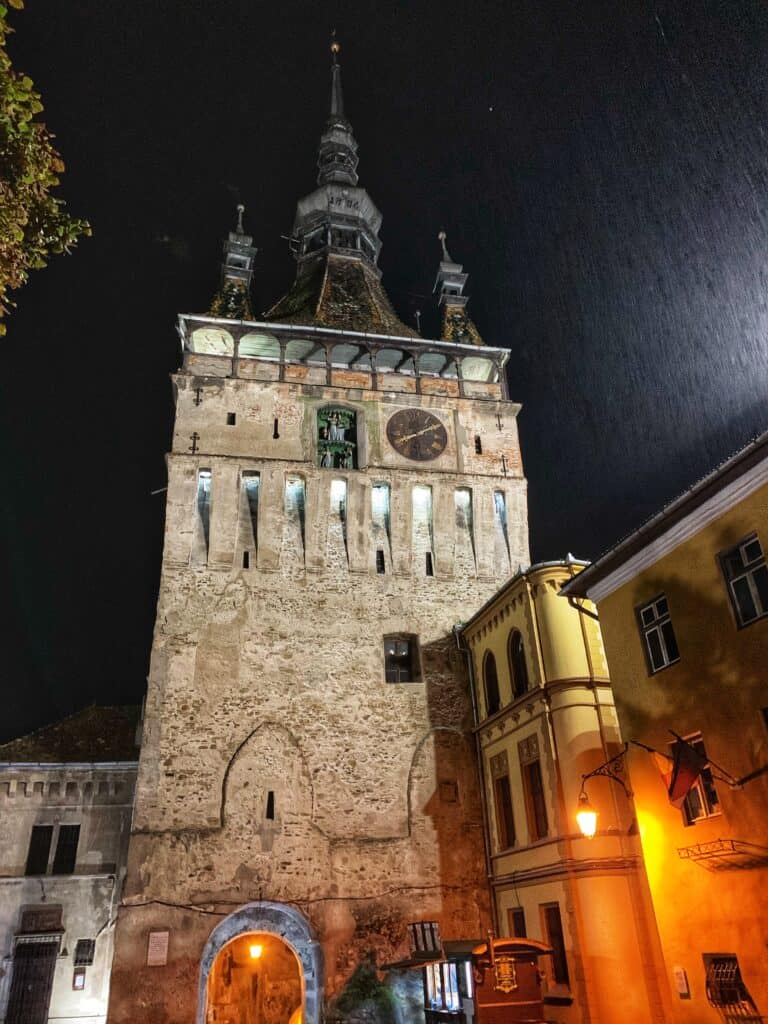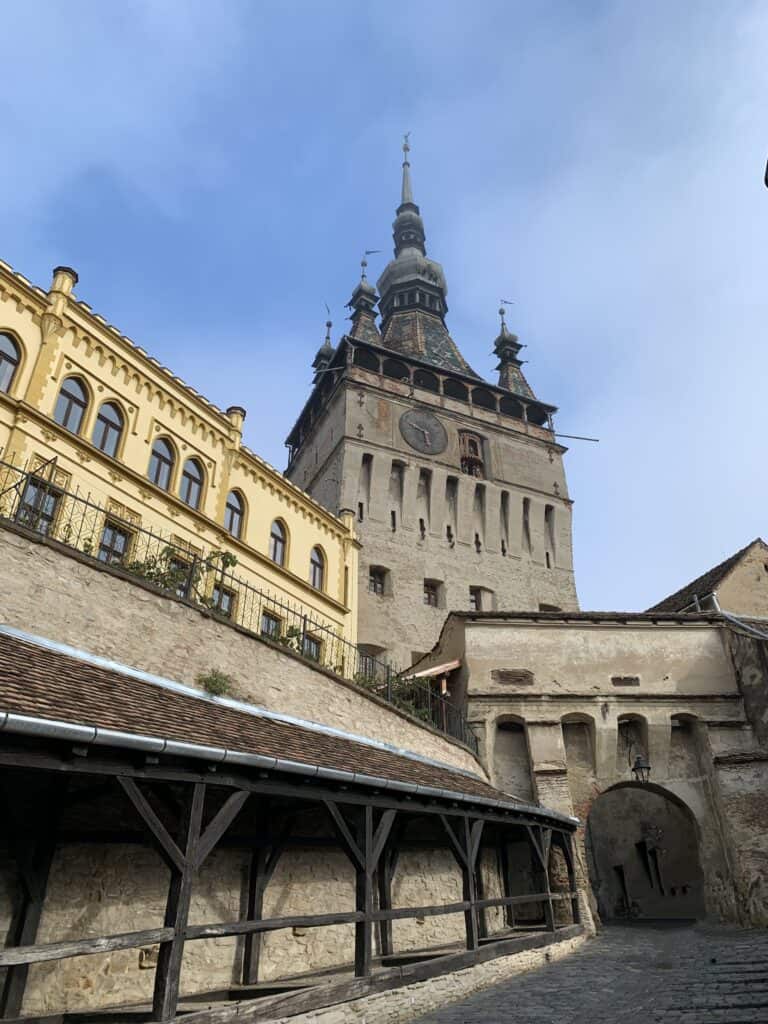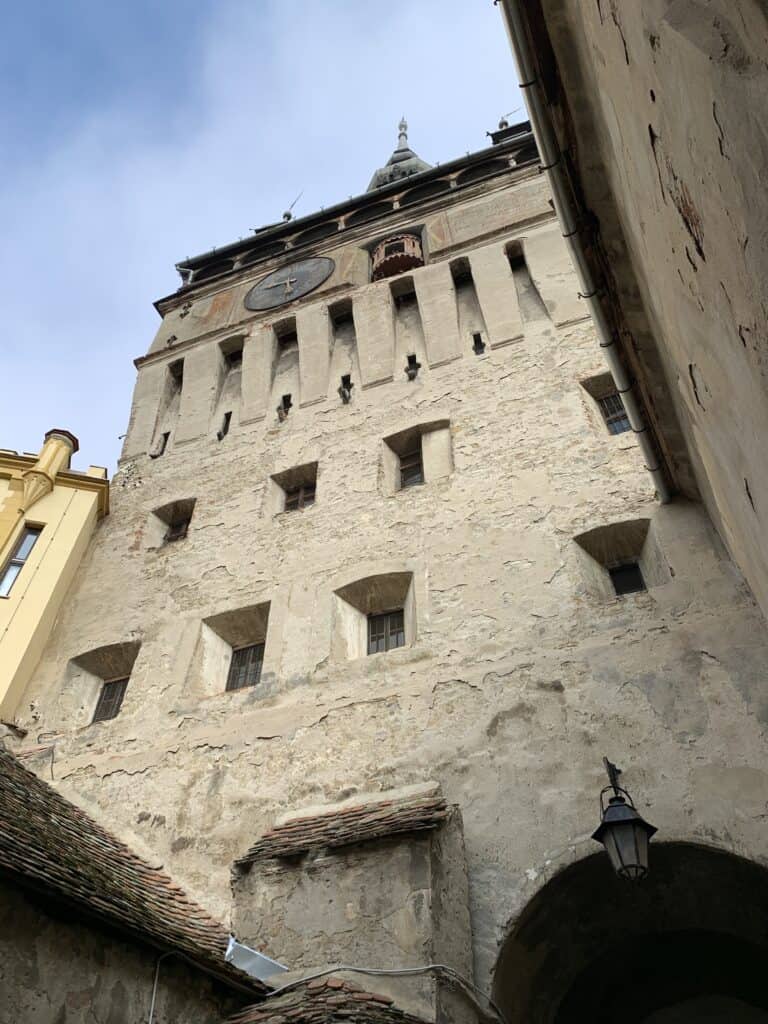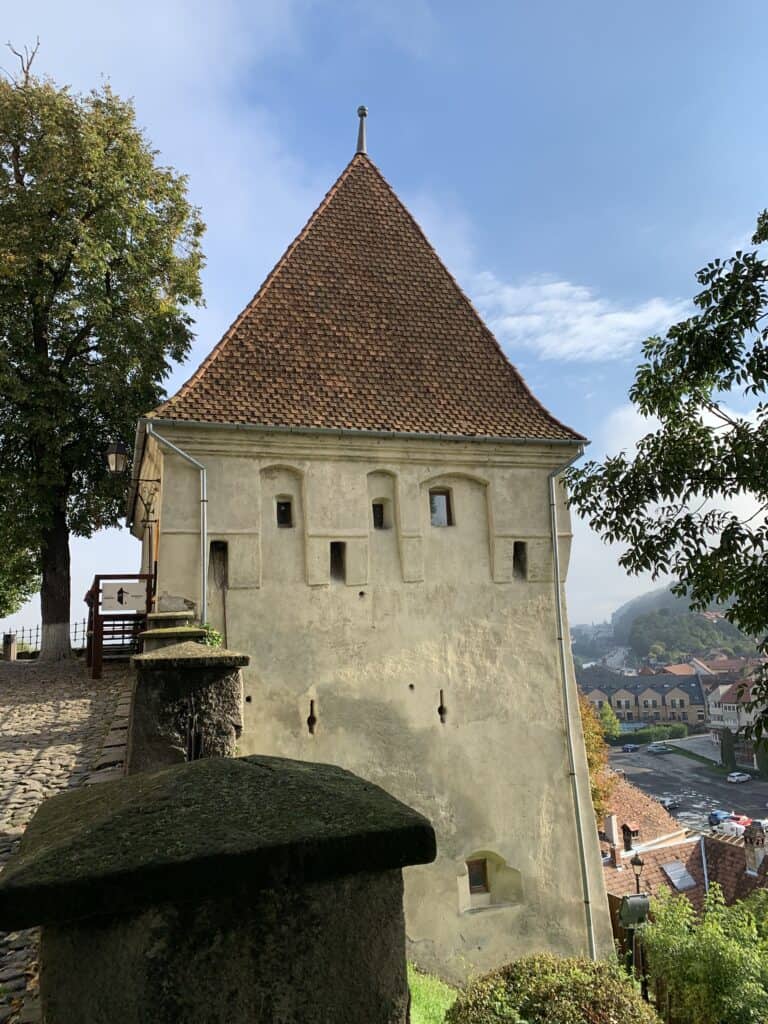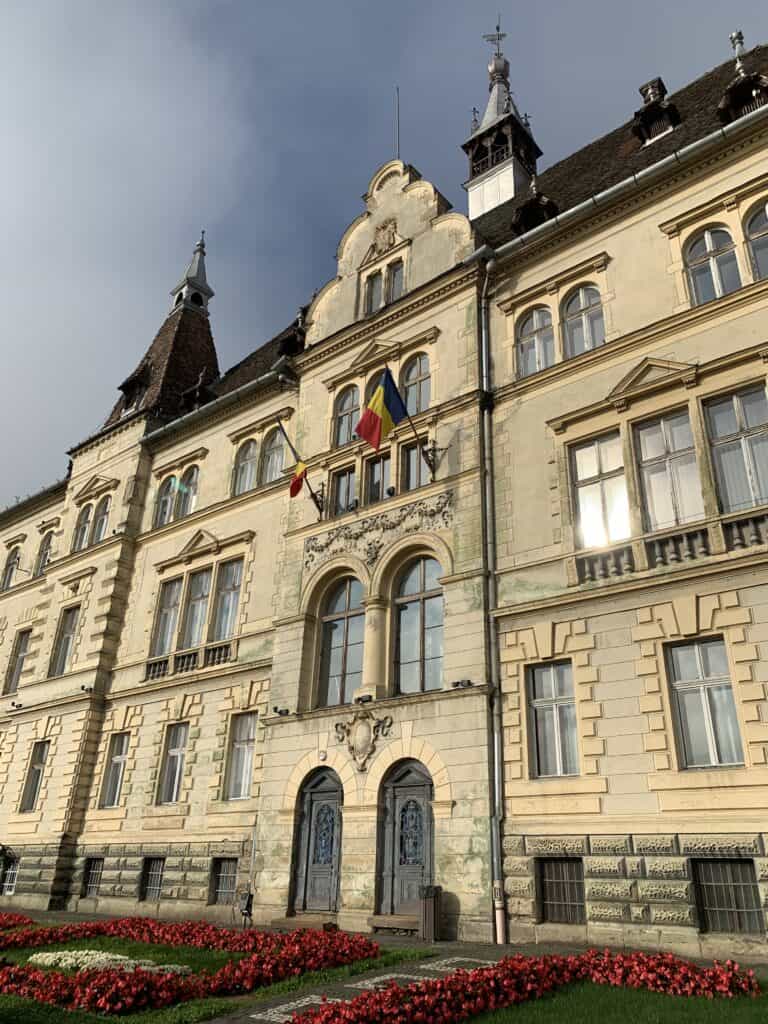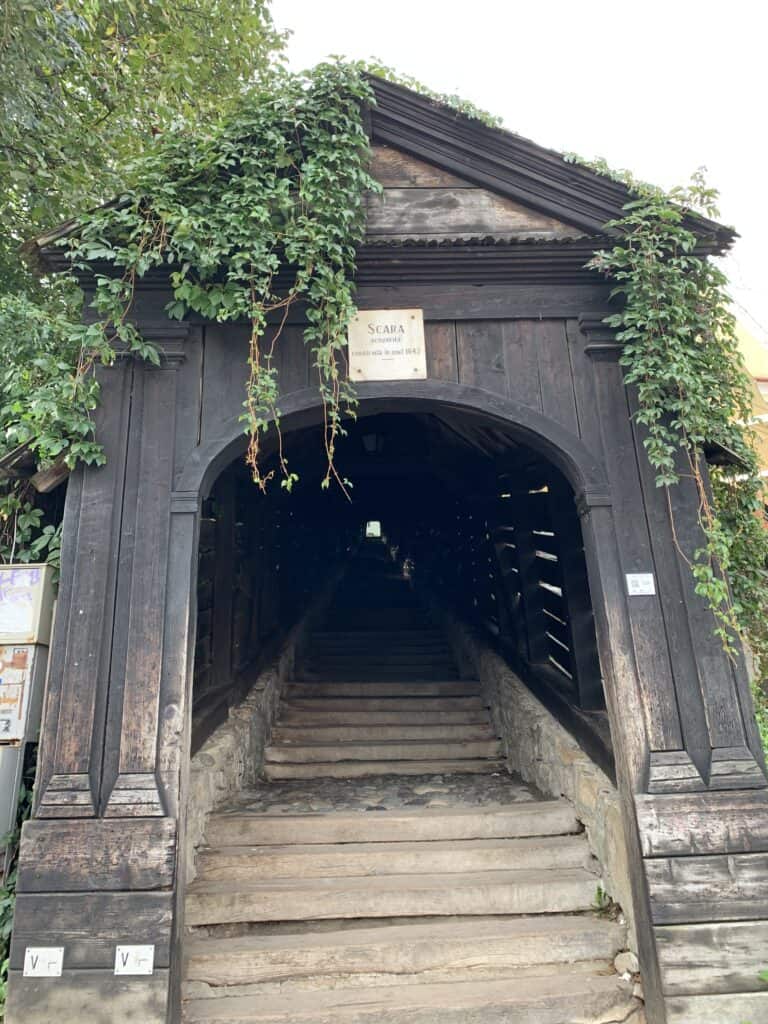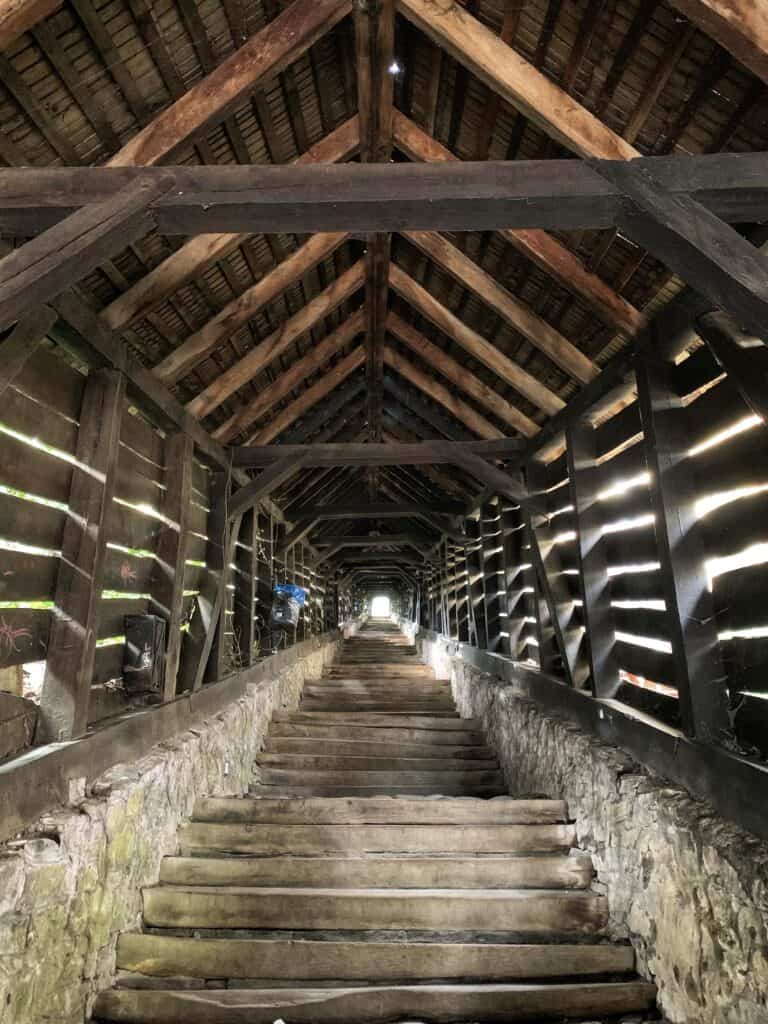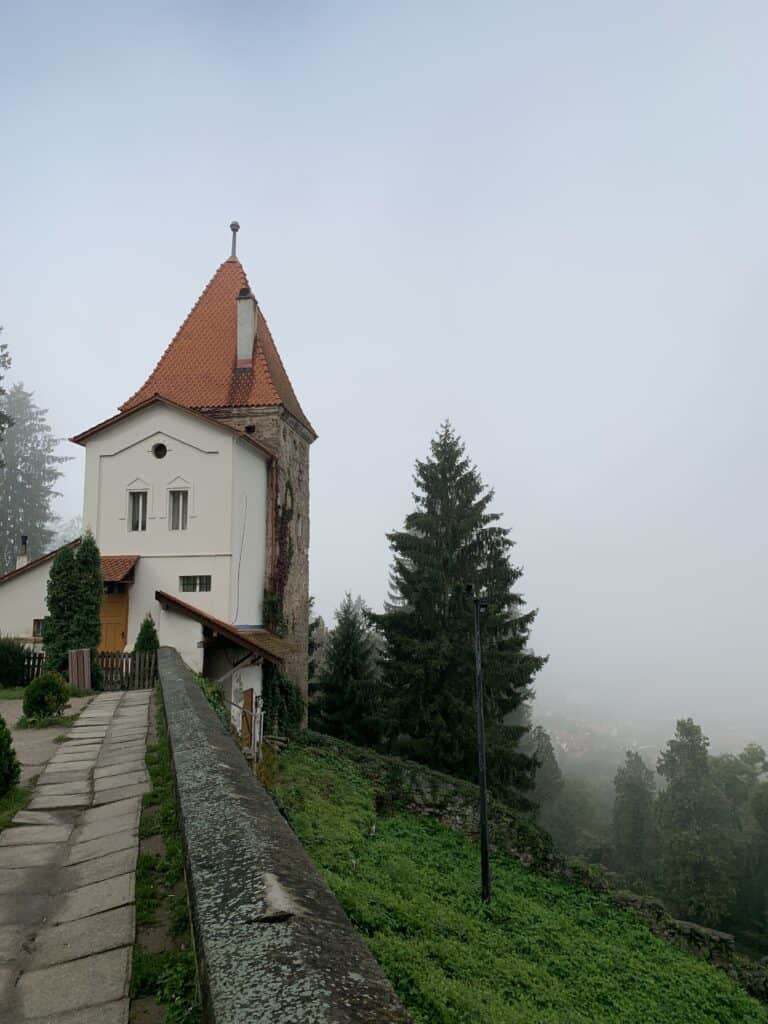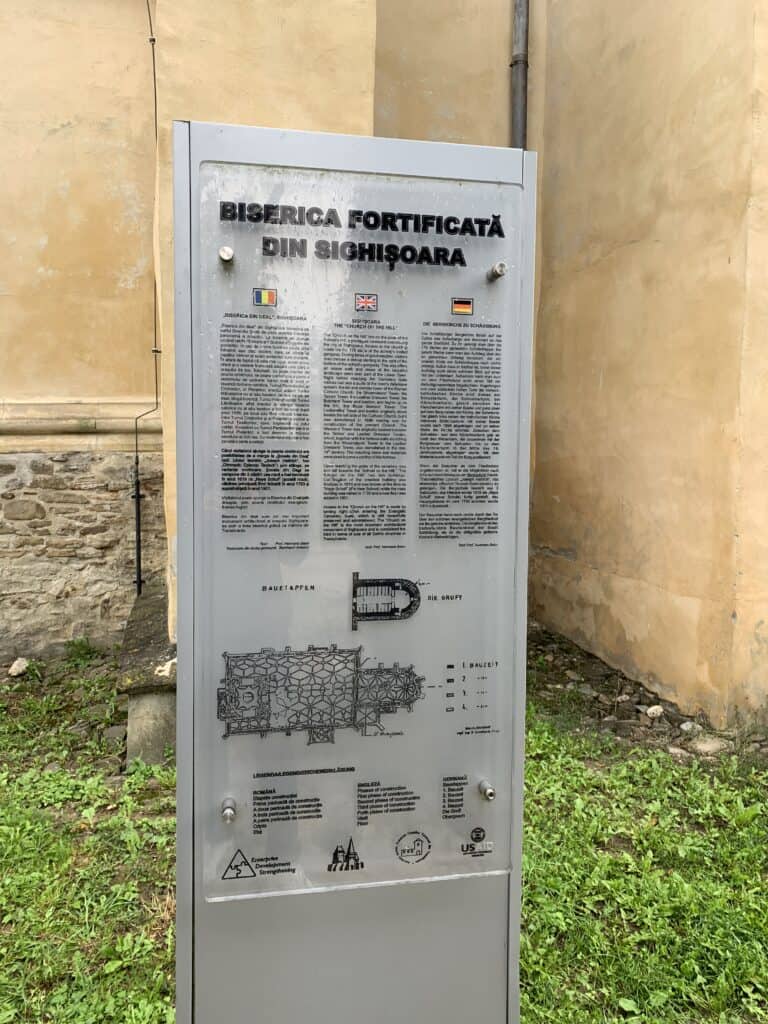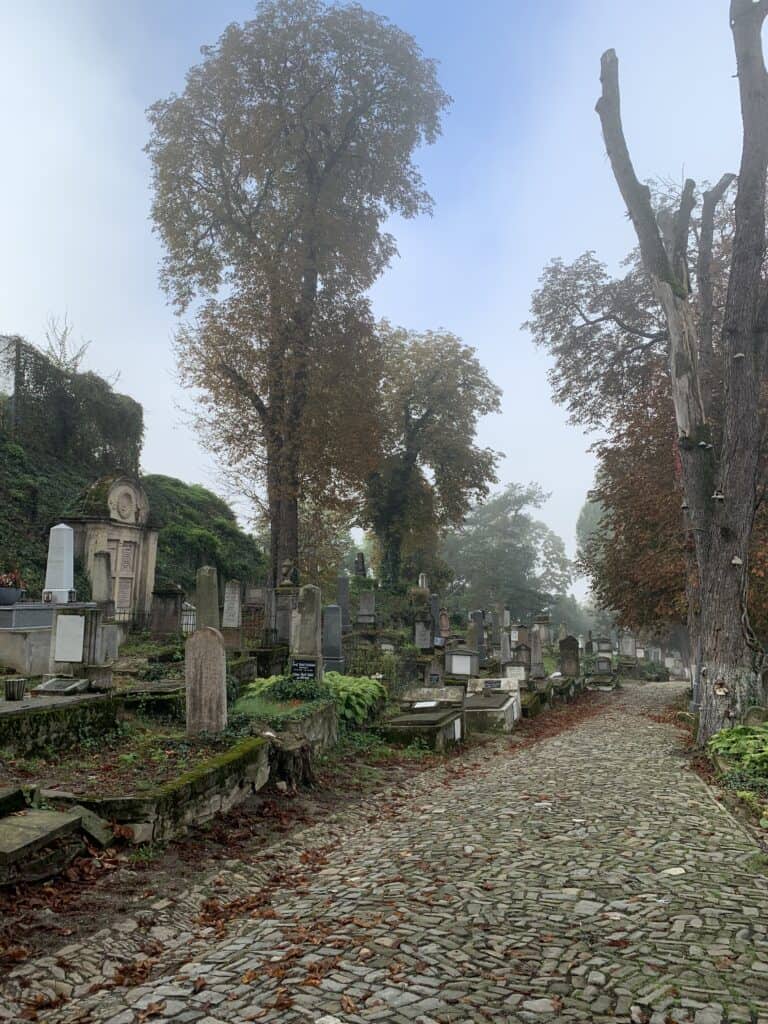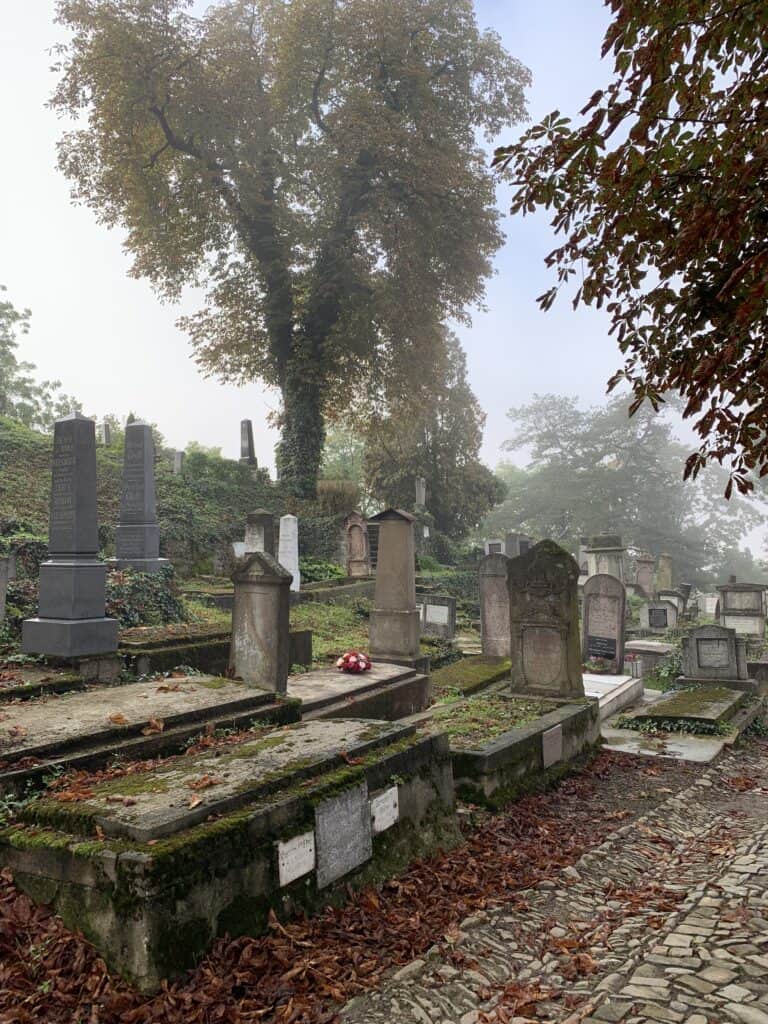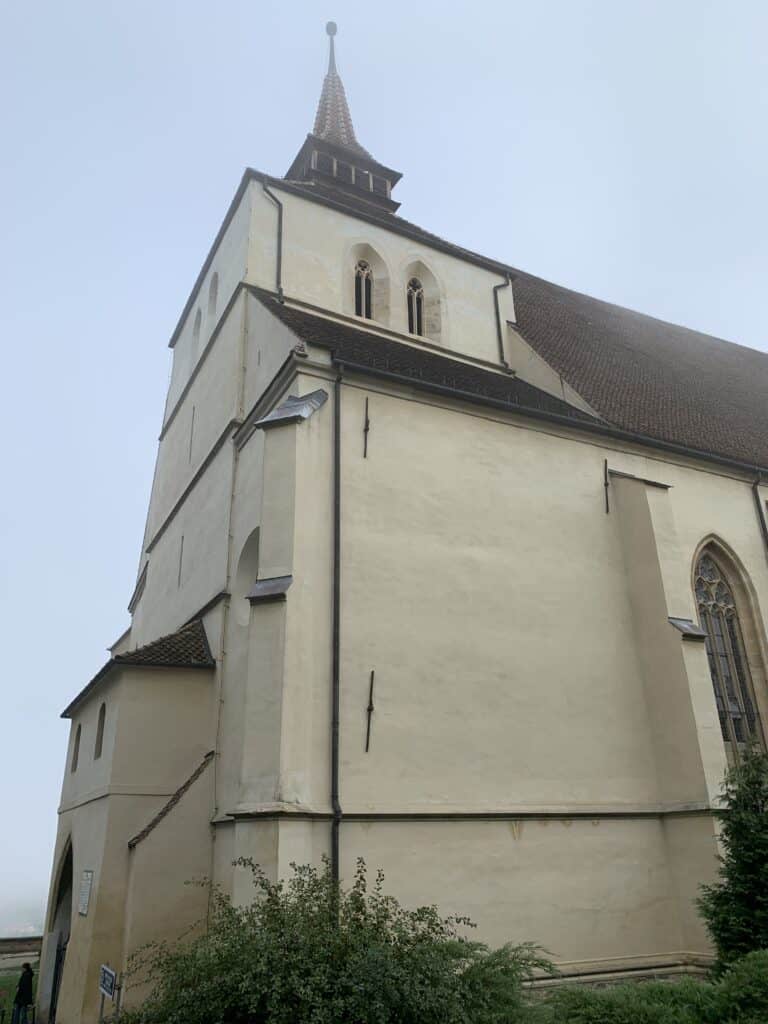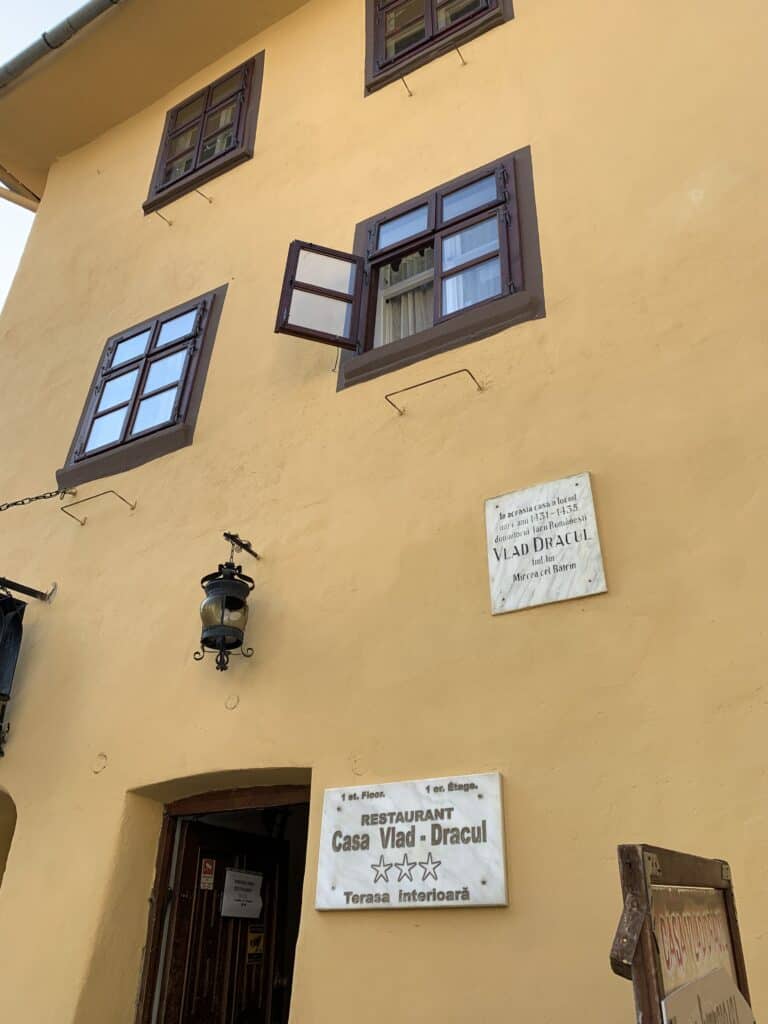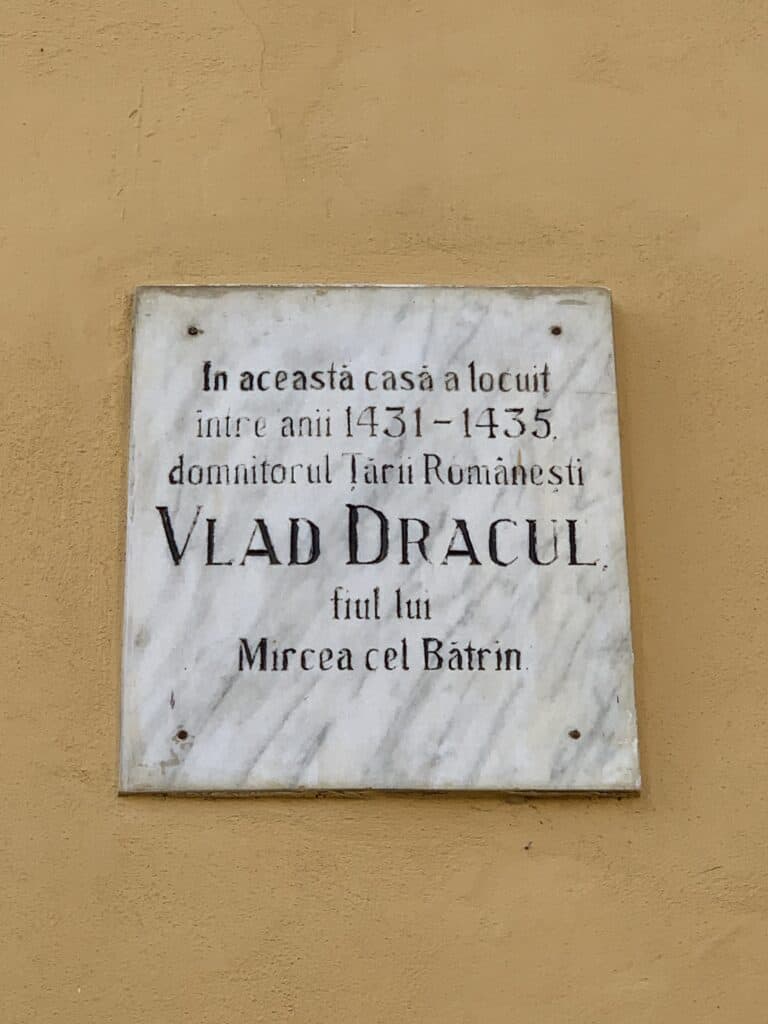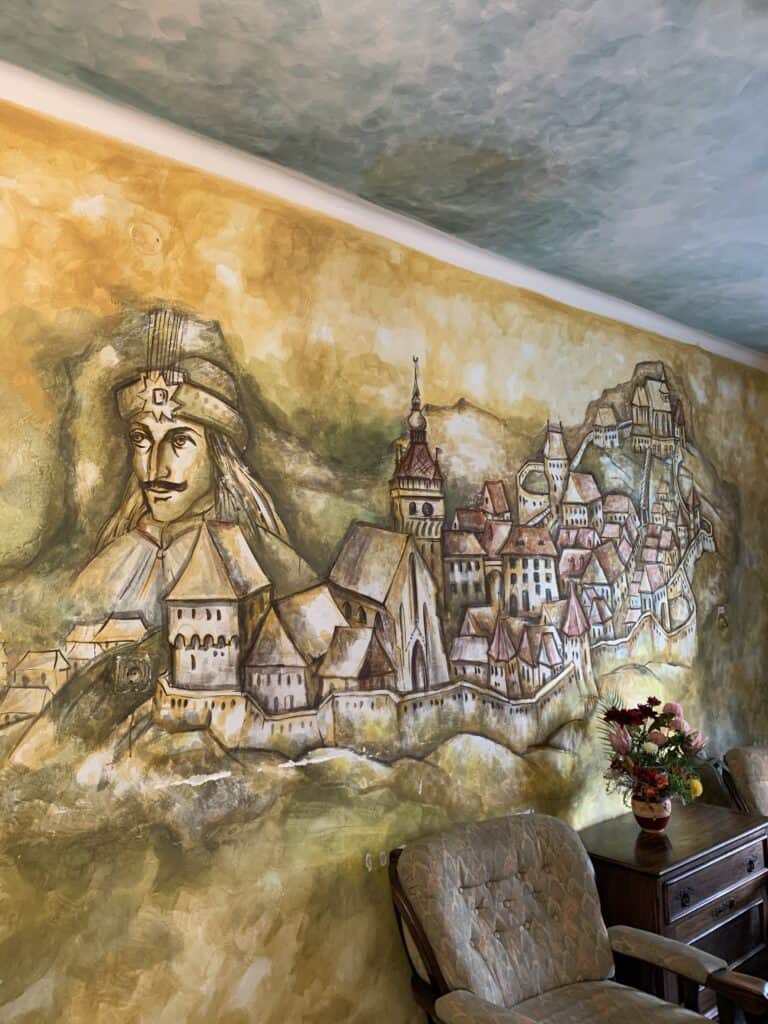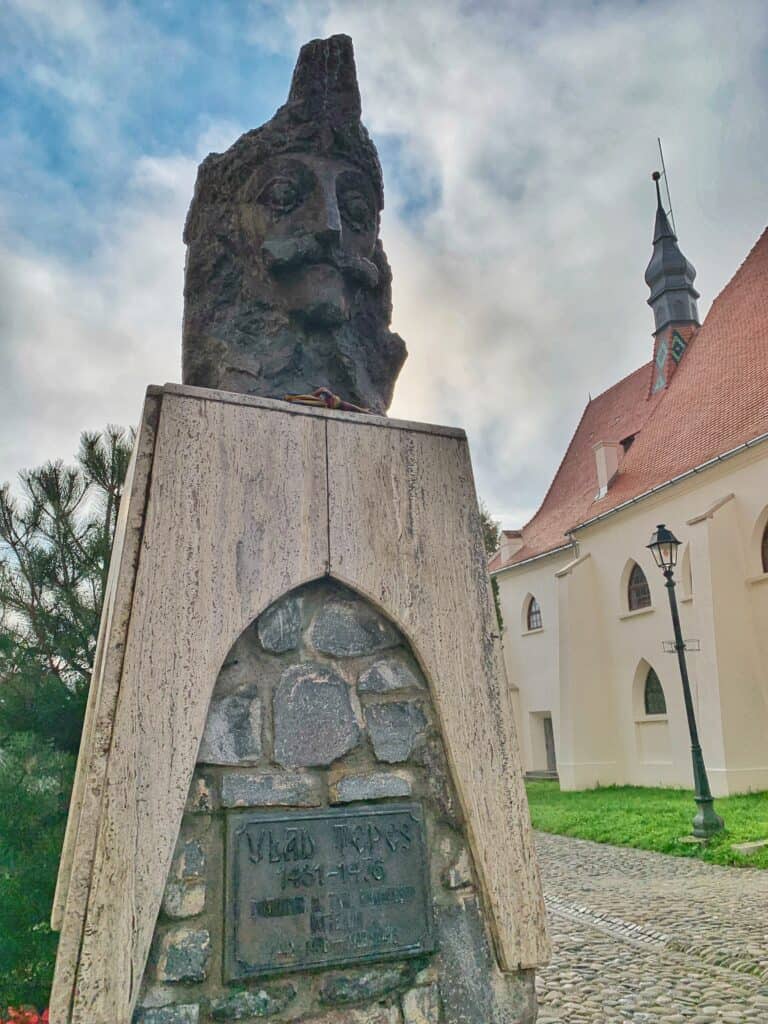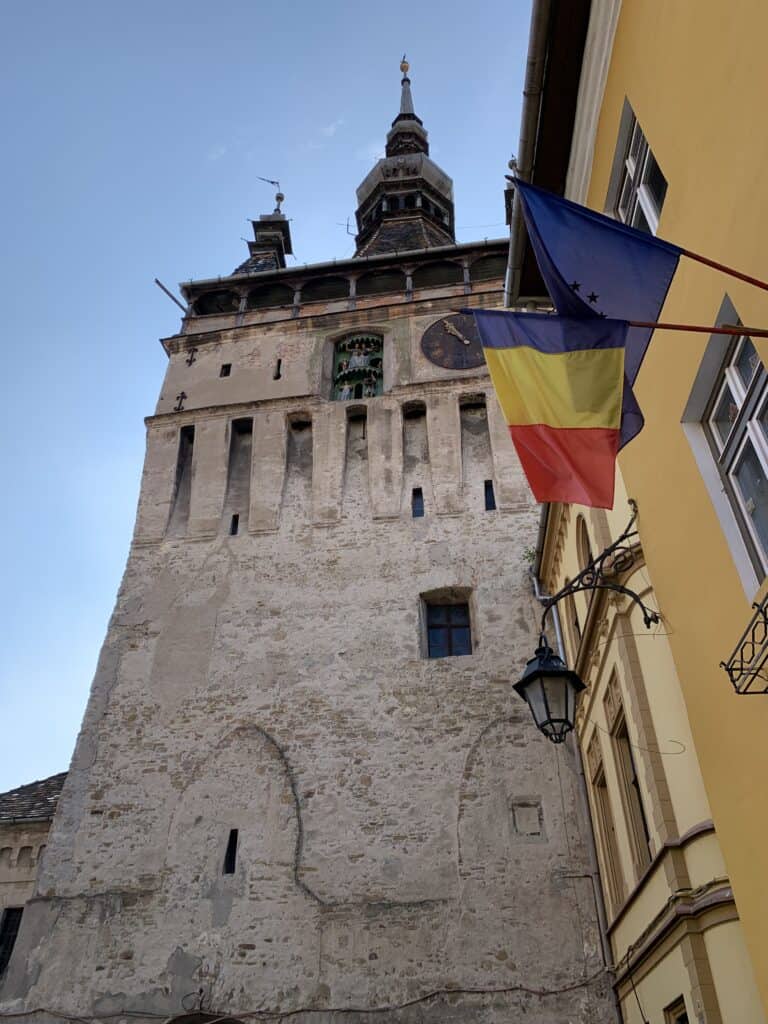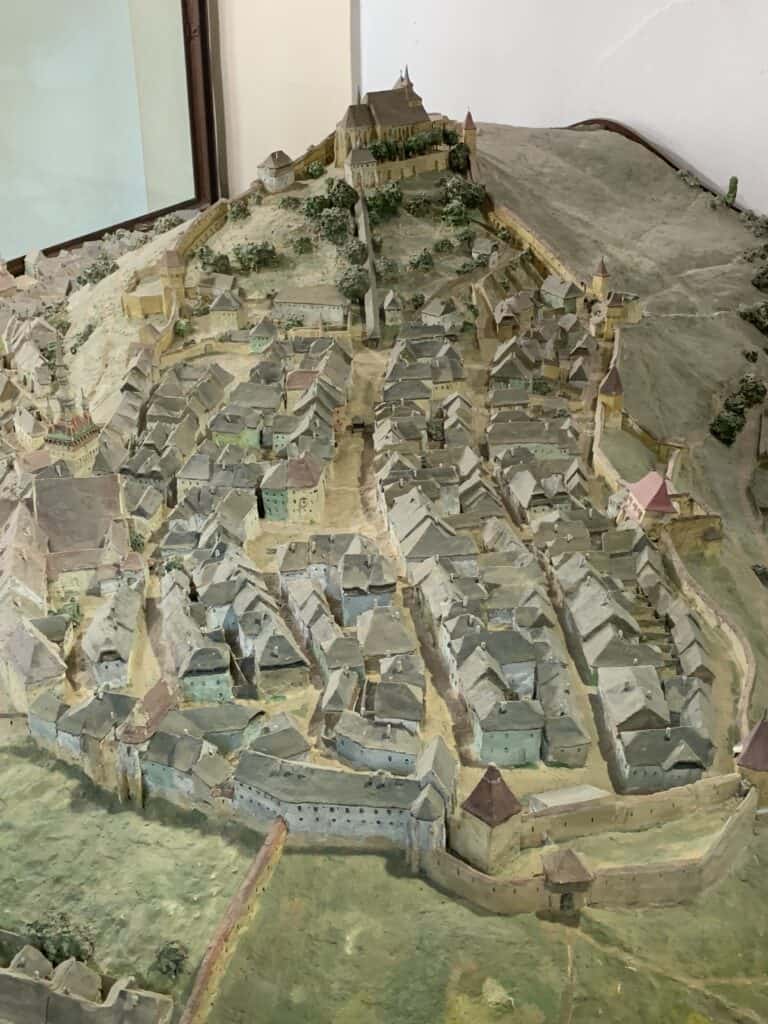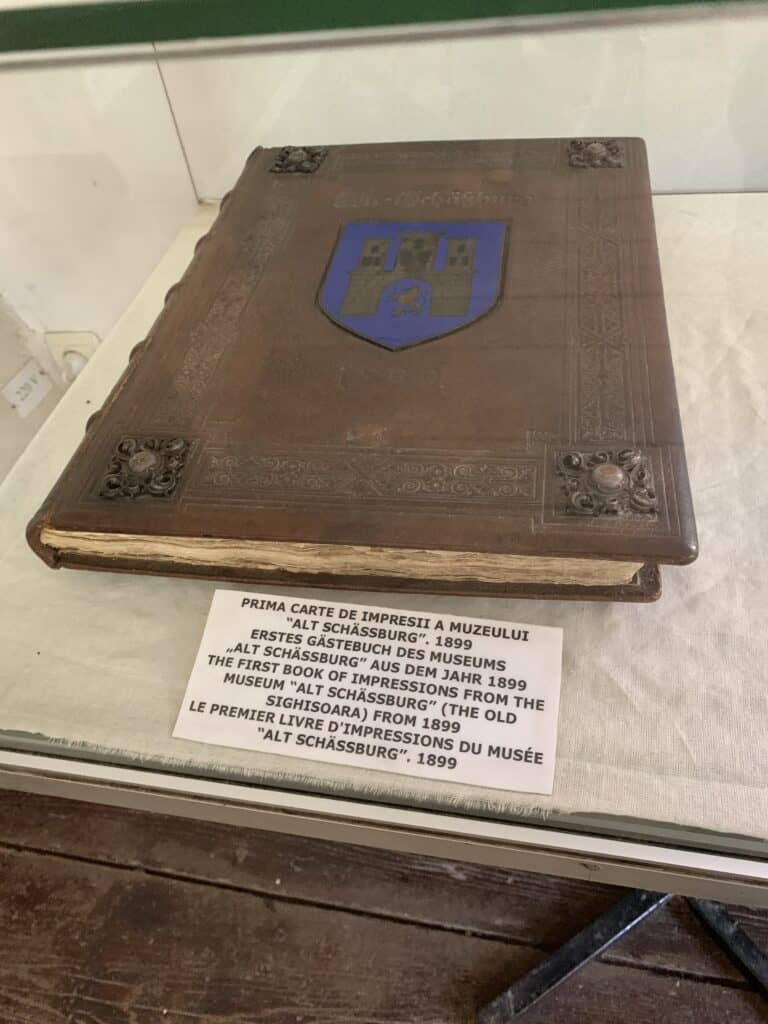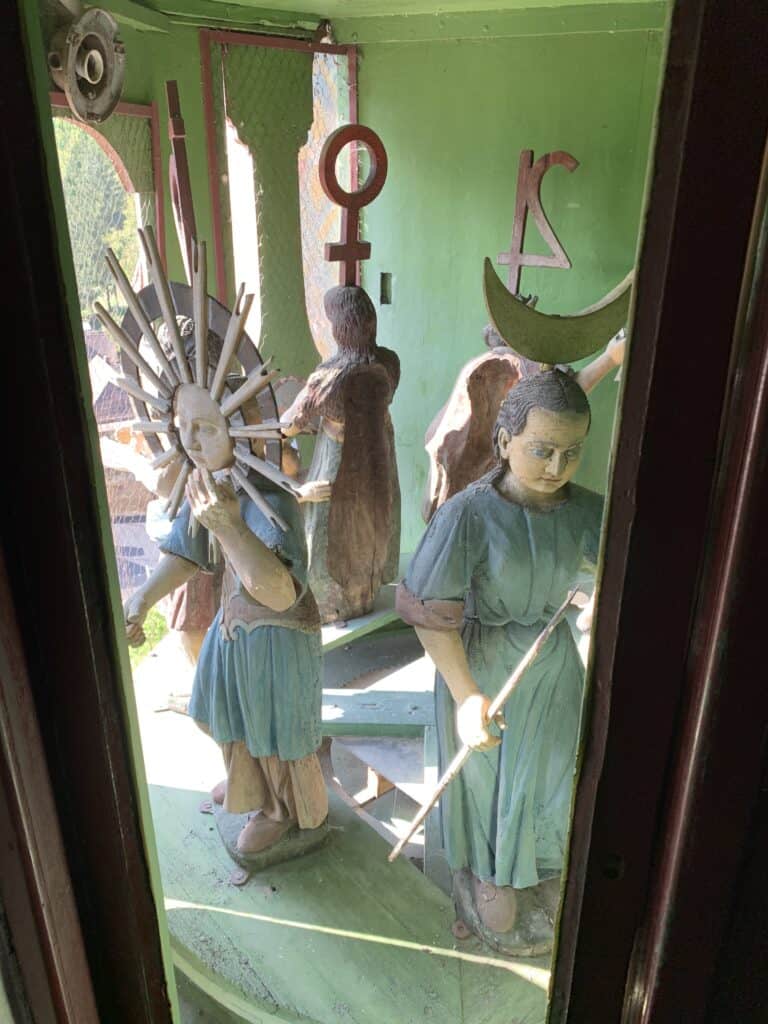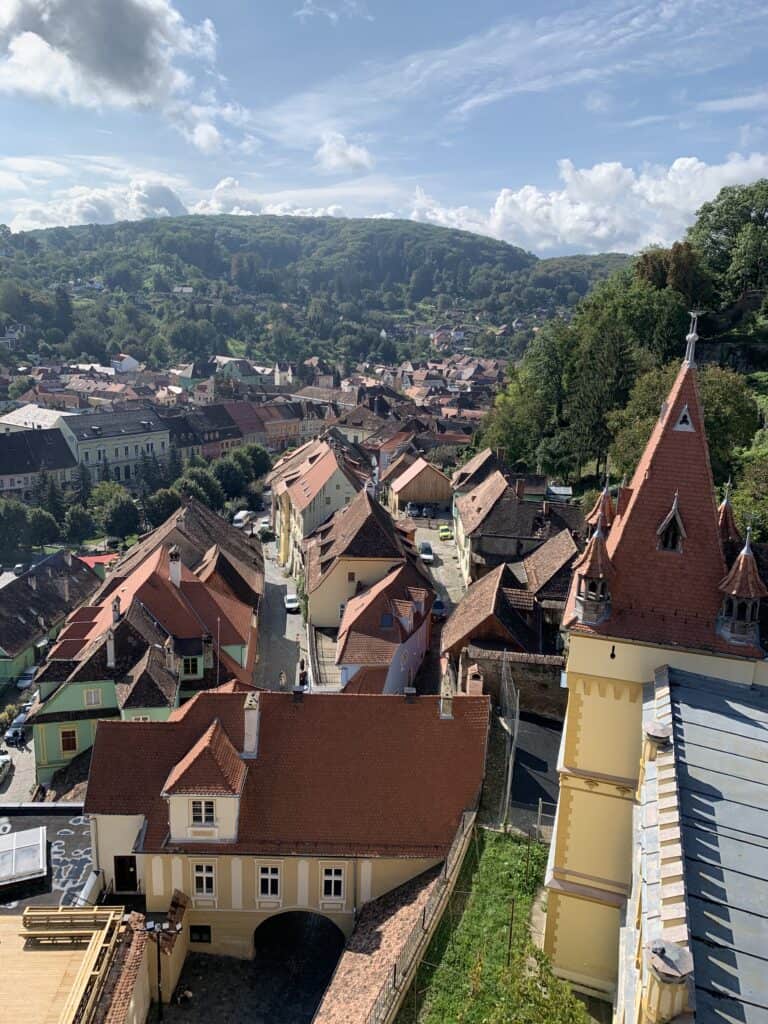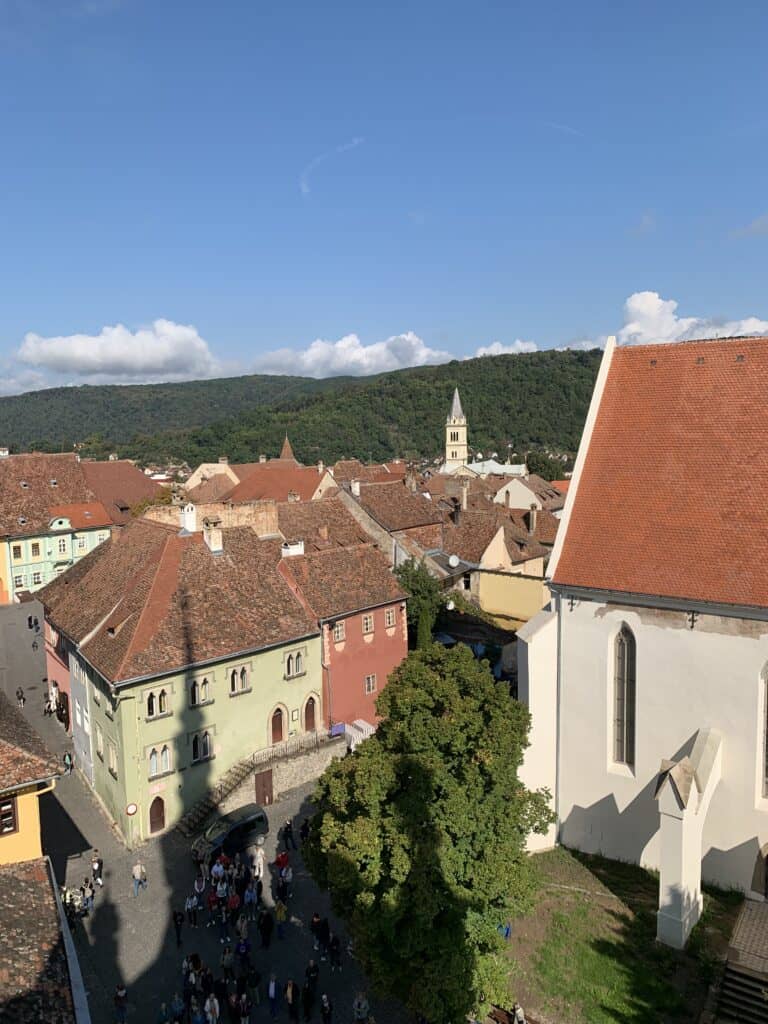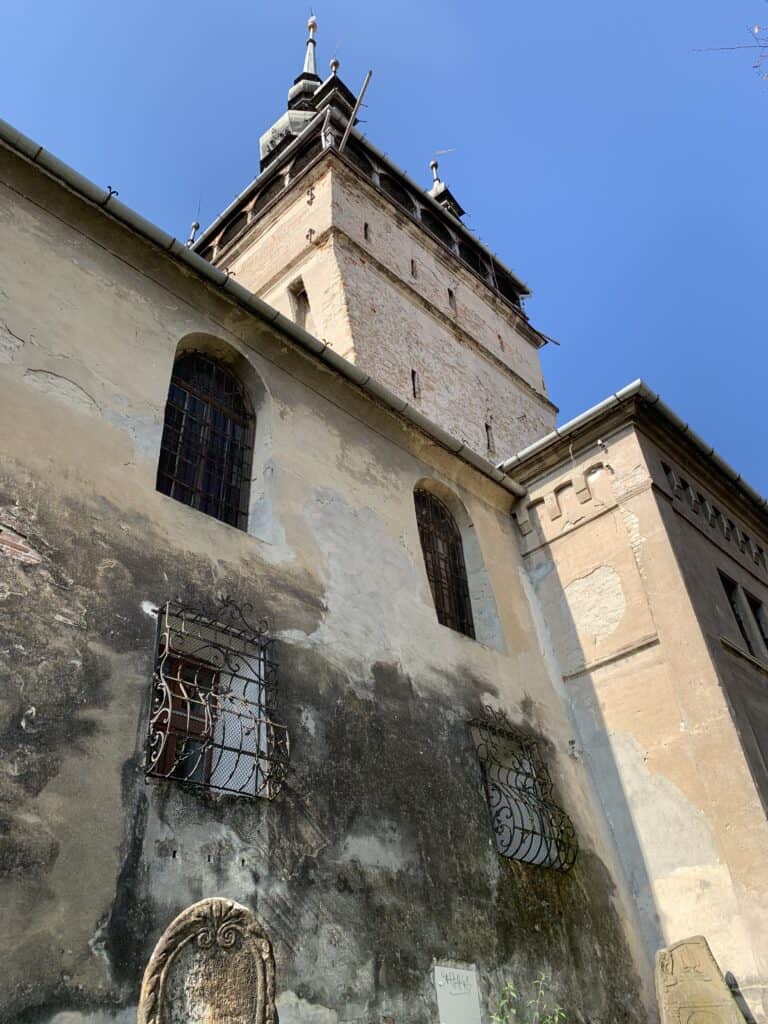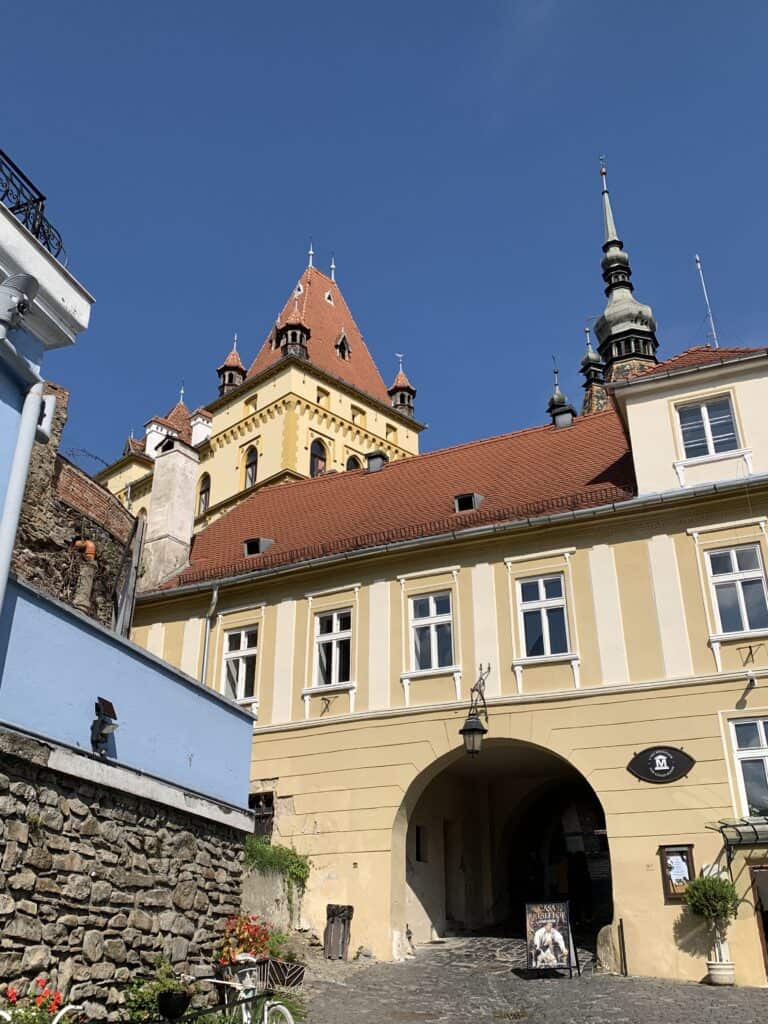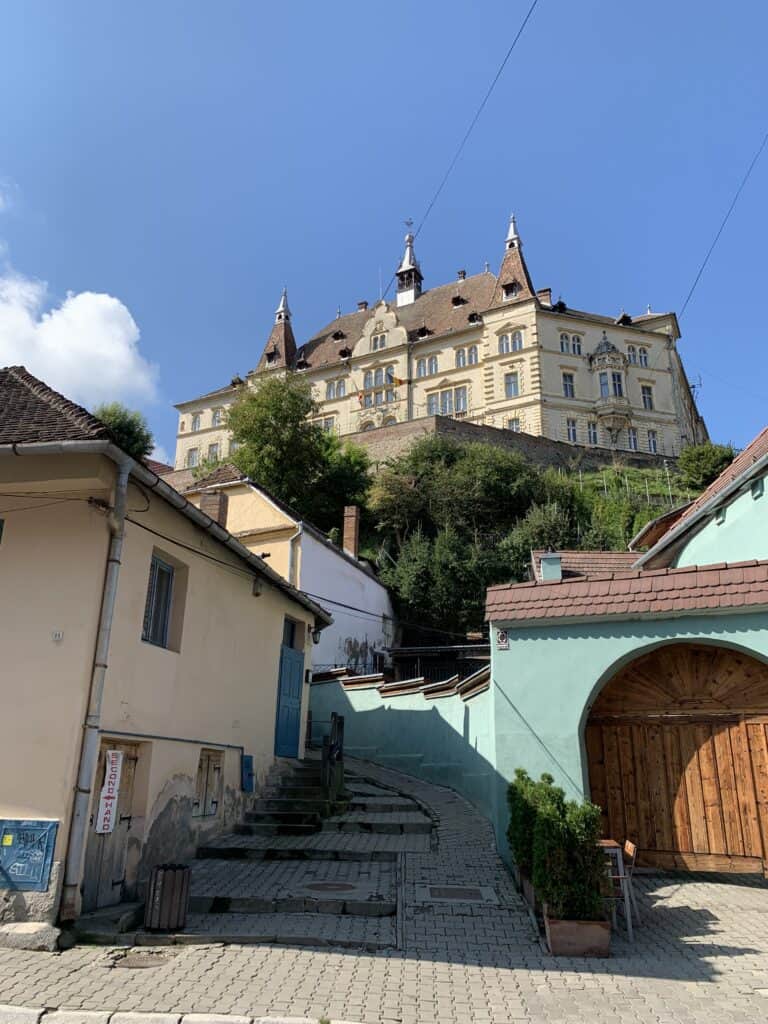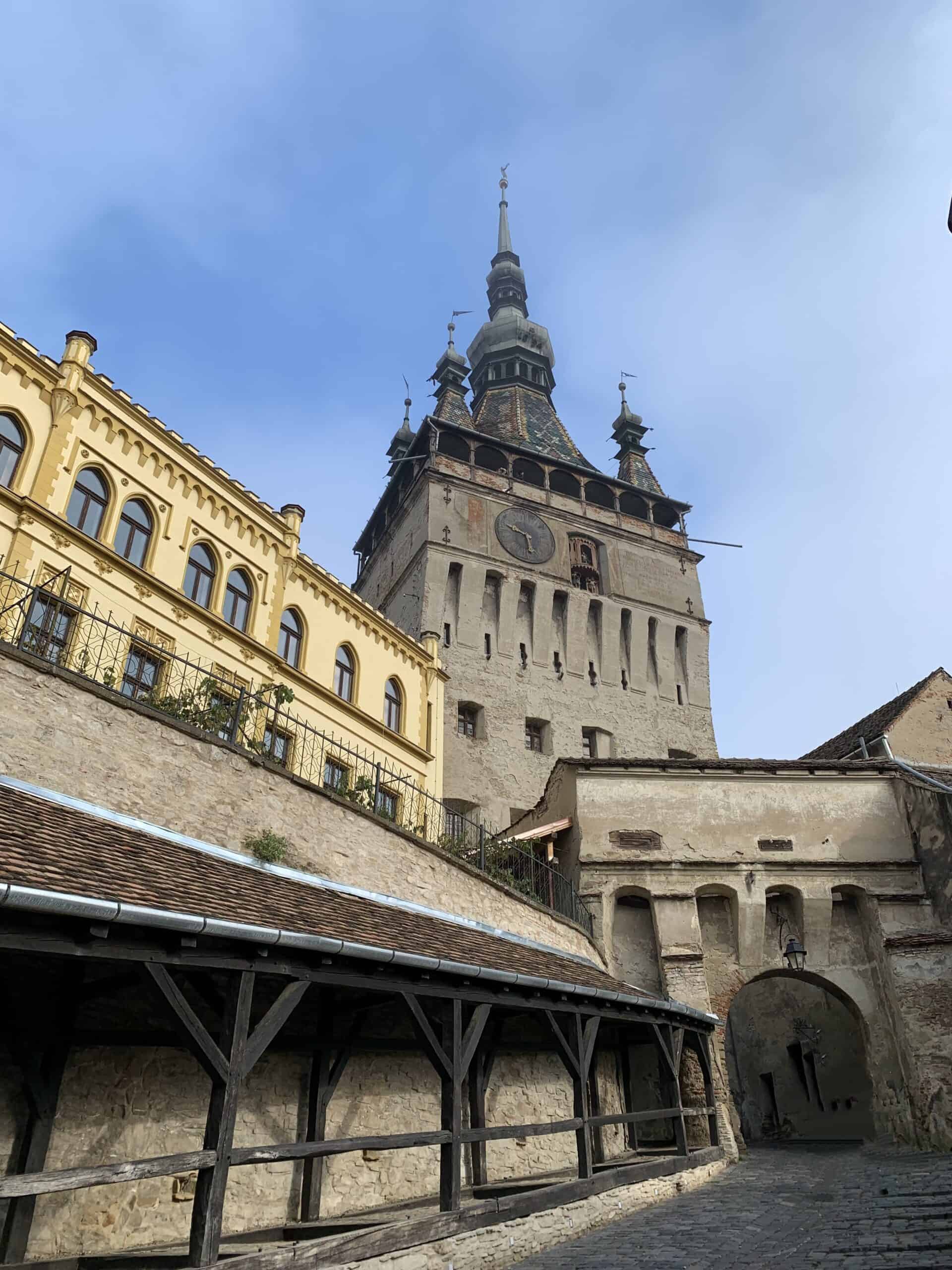
Sighișoara, declared a World Heritage Site by UNESCO, came from the Saxons at the end of the twelfth century and reached its maximum splendor in the fifteenth century when it became a free city.
Sighișoara has an almost perfectly preserved city center, with 9 of the 14 towers still original, ramparts and medieval houses still intact.
In the city center there are numerous attractions but the main ones are the Clock Tower, Vlad’s Birthplace and the Church on the hill connected thanks to the Wooden Covered Staircase.
Also called the Council Tower because it housed the city assemblies, the Clock Tower dates back to the thirteenth century. Known as Turnul cu Ceas in the local language, inside there is also the History Museum dedicated to the city of Sighișoara inaugurated in 1898.
It is the entrance point to the Citadel, and with its 64 meters high it is visible from virtually every corner of the city. The tower was restored in 1964 with the installation of an electric motor for the clock.
The church on the hill, or Biserica din Deal is a church built in the Gothic style in which some fragments of frescoes from 1480 are preserved. Church can be reached by a clad wooden staircase, known as the Scholars’ Scale, as the hill on which it stands is called “hill of scholars”.
House of Vlad Dracul is the place where Vlad Tepes was born in 1431 and where he lived with his father until 1435 when they moved to Targoviste. The house is located between the citadel square and the Clock Tower.

